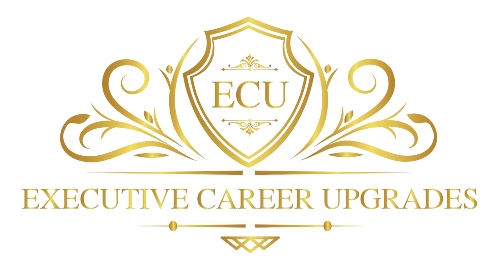“So, how much are you looking to make?”
Even the most experienced executives can feel out of their element when negotiating salaries, especially when approaching the “ceiling” of their careers. But when it comes down to numbers, your expertise, leadership, and contributions to the company’s success deserve recognition and reward.
In my time as an executive coach, I’ve worked with a variety of leaders who feel that they are not being properly compensated for their level of responsibility and impact. Many of them have never negotiated their salary before or are afraid to ask for more, despite knowing they deserve it.
But you can’t get what you don’t ask for—and that’s where negotiating skills come into play. Just like you don’t want your clients to undervalue your company’s worth, you should not undervalue your own worth when it comes to salary negotiations.
1. THE POWER OF SILENCE AND PROCESS CONTROL
In high-stakes negotiations, silence can be your most potent weapon. I advise my executive clients to employ the “10-second rule” after a number is proposed.
Simply pause, maintain eye contact, and wait. This technique creates tension that often prompts the other party to improve their offer or reveal valuable information.
Negotiate the process itself. Propose a structured approach with multiple meetings, allowing time for reflection between sessions. This strategy gives you the upper hand by controlling the pace and format of the negotiations, preventing rushed decisions, and allowing for more strategic moves.
2. THE HOLISTIC VALUE PROPOSITION
At the executive level, think beyond base salary and consider the entire value proposition. This includes equity, bonuses, benefits, work-life balance, and perks like corporate travel access. By broadening the scope of negotiation, you create more opportunities for win-win scenarios.
Remember, compensation at this level is about crafting a package that recognizes your worth and aligns with your long-term career goals. Be creative in your requests and open to alternative forms of compensation that may be more valuable than a simple salary increase.
3. THE “FUTURE YOU” STRATEGY AND COMPETITIVE INTELLIGENCE
Want to convince those with the pursestrings? Paint a picture of the value you’ll bring to the organization in the future. Articulate your vision for the company and how your leadership will drive growth. Taking a forward-thinking approach justifies higher compensation based on anticipated results rather than simply historical data.
Complement this by leveraging your network to gather intelligence on compensation packages at competing firms. Present this data not as a threat, but as market research that benefits both parties. Frame it as a collaborative effort to ensure the company remains competitive in attracting and retaining top talent.
4. THE “EARN-OUT” PROPOSITION AND DELAYED GRATIFICATION
Propose a performance-based earn-out structure that ties a portion of your compensation to specific, measurable goals. This demonstrates confidence in your abilities and aligns your interests with the company’s success. It’s a powerful way to justify a higher overall package while mitigating the employer’s risk.
You can also offer to accept a lower initial salary in exchange for guaranteed increases or bonuses tied to specific milestones. This demonstrates your commitment to long-term value creation and can lead to a higher overall compensation package.
5. THE REPUTATION MULTIPLIER AND “PORTFOLIO CAREER” ANGLE
Quantify the value of your personal brand, including your network, media presence, and thought leadership. Demonstrate how your reputation can open doors, attract talent, and drive business opportunities for the company.
Negotiate for the flexibility to maintain advisory roles or board positions alongside your primary job. Position these activities as assets that bring additional value and insights to your role, justifying a higher base salary to compensate for any limitations on outside activities.
6. THE “INVEST IN ME” APPROACH
In keeping with the value element, propose a professional development budget as part of your compensation package. This could include executive education, coaching, or space to attend high-level industry events.
When you bring this forward, frame it as an investment in your continued growth and effectiveness as a leader, ultimately benefiting the organization.
This approach demonstrates your commitment to ongoing improvement and positions you as a forward-thinking leader who understands the importance of staying at the cutting edge of your field.
7. THE “COMPENSATION ECOSYSTEM” STRATEGY
Negotiate for the ability to build and manage your own team, including discretionary bonuses for your direct reports. This level of control can be more valuable than a marginal increase in personal compensation and positions you as a leader invested in developing talent.
Having the authority to shape your team and reward performance can significantly enhance your ability to drive results, which in turn justifies a higher personal compensation package.
FOCUS ON VALUE AND NUMBERS
My biggest piece of advice? Remember that the most successful salary negotiations at the executive level transcend mere numbers and focus on creating value for both the individual and the organization.
Your goal should be to craft a comprehensive package that not only compensates you fairly, but also sets you up for success in your new role.
Don’t be afraid to think outside the box and propose innovative compensation structures that align with your personal goals and the company’s objectives. The strategies outlined here are designed to give you an edge in negotiations and demonstrate your value as a strategic thinker and leader. Mastering these advanced negotiation tactics will not only help you secure a better compensation package, but also set the stage for a more fulfilling and impactful executive journey.
Remember, your time, experience, and leadership have immense value—it’s up to you to ensure that value is recognized and rewarded appropriately in your compensation package.


